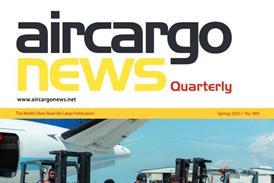TWO different but not exclusive approaches to the challenges Customs services face in Asia were outlined at TIACA’s Executive Summit AGM in Bangkok.
Jae-Ho Park, faculty director of the Korea Customs Official Training Center, favoured an emphasis on RFID technology, and acknowledged it was part of a package of measures Korea has undertaken to improve efficiency without compromising security.
“Since 2008 the introduction and expansion of RFID is the most emphasised policy,” he told Air Cargo News after his speech.
As well as providing extra human resources for air cargo clearance at Incheon (pictured), Korea Customs introduced an advanced air cargo RFID control system, which improved efficiency over the barcode system.
The system has the ability to read packages within six metres versus just 50 centimetres and comprehensively as opposed to item by item. This is a great advantage for consolidated cargo as it can be read at once sometimes barcodes cannot do.
By reducing the system from 10 Customs-related steps to four average cargo handling time fell from 314 minutes to 237 minutes.
Balancing this was a presentation from Tanat Suvattanametakul, director of Suvarnabhumi Airport Cargo Clearance Customs Bureau, who stressed the need for cooperation especially as fewer and fewer resources are given to cover an increasing number of functions. “We can solve problems if we have good cooperation [and] working with our partner is important,” he said.




